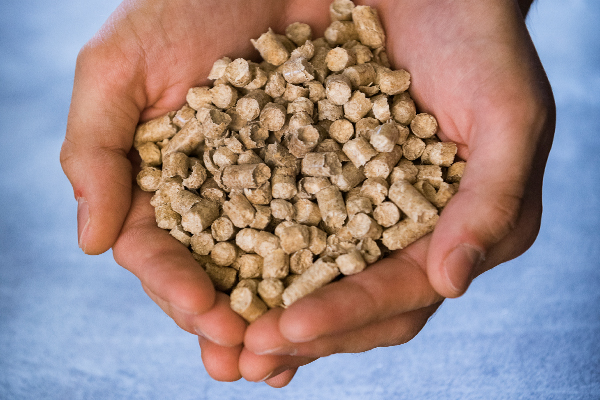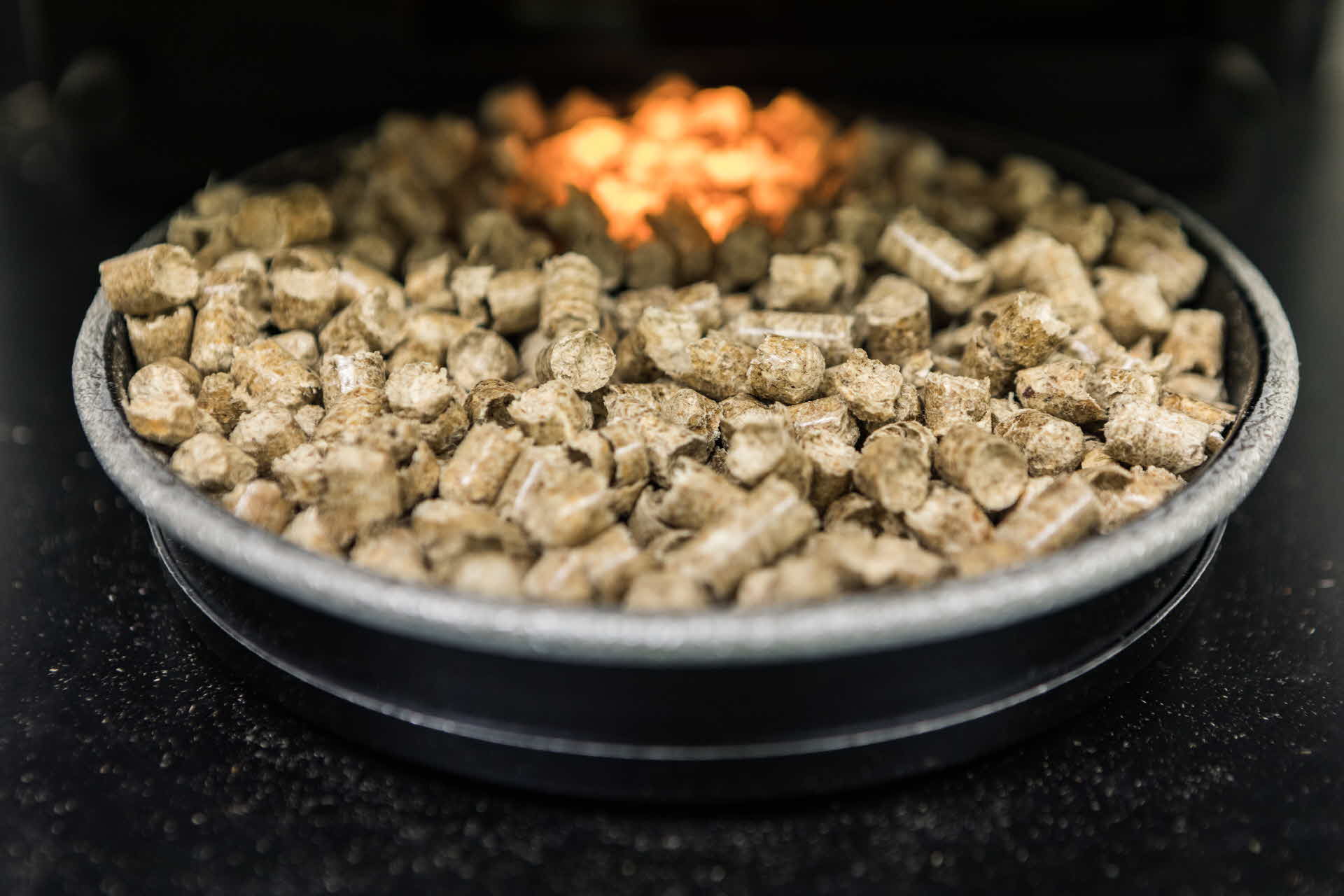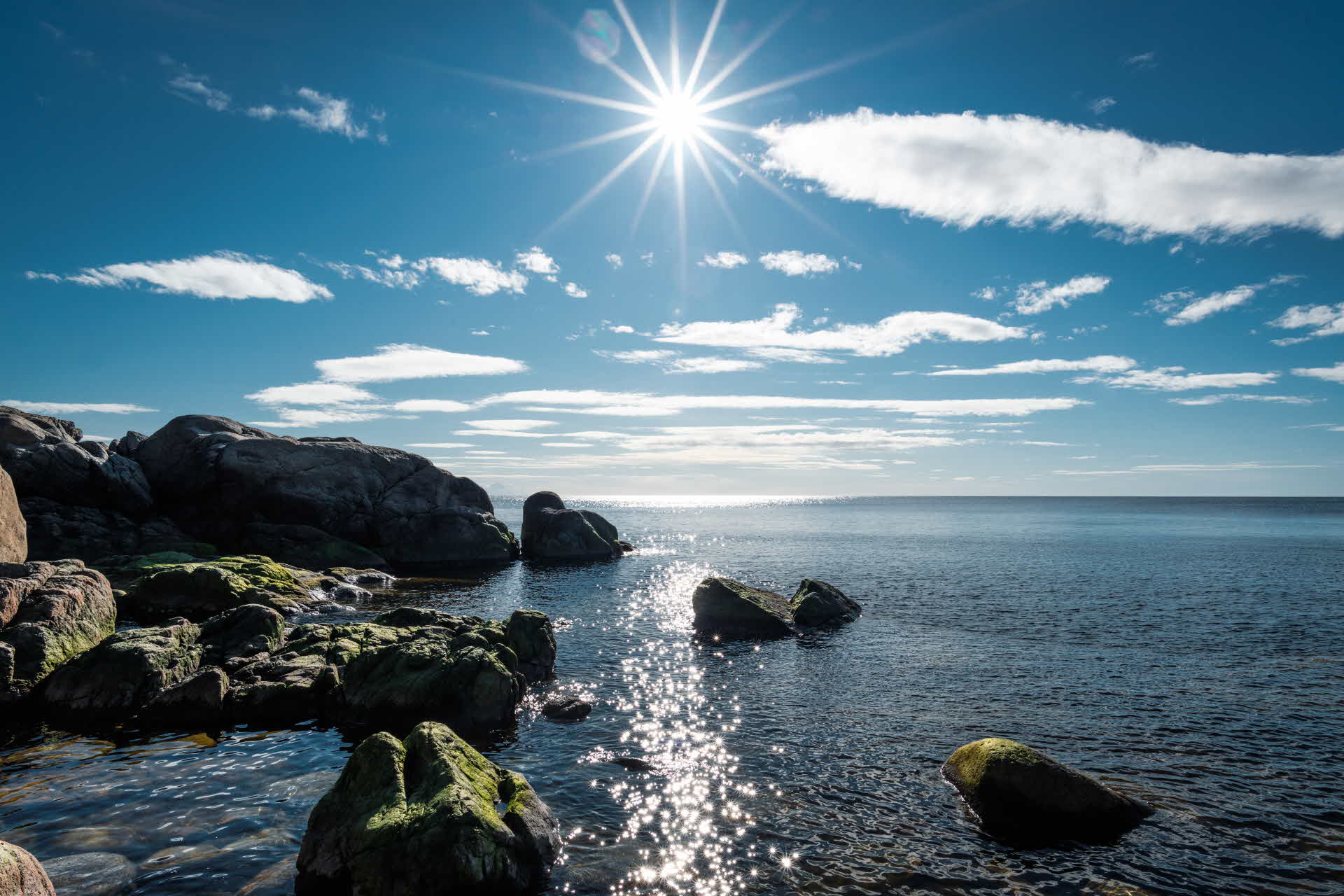In winter, it’s used for pellet storage. In summer, the garden cushions live in the box on the patio.

- MEDIA
- RELIABLE AND SUSTAINABLE HEATING
Sustainable and reliable heating
- Article
When Nils and Lena built their house in Härnösand nearly 15 years ago, they wanted an environmentally friendly, energy-efficient home. A pellet stove became the heart of the house. Combined with solar collectors, rooftop solar panels, and a heat pump, they’ve created a sustainable, warm, and cozy home.
Conscious, sustainable choices
When building a new home, there are many decisions to make.
“We chose to build a well-insulated, fairly small house. We wanted underfloor heating and fossil-free heating—but preferably not electricity,” explains Nils, who is very happy with their solution.
Their choice became a heating system made up of several sources of energy.
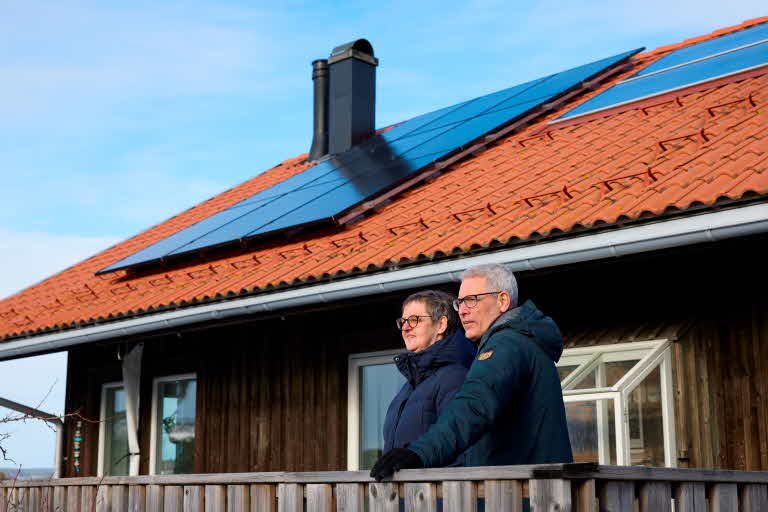
“Pellets provide the base heat during the coldest months. The pellet stove heats both the domestic hot water and the house. It’s easy to manage and efficient. The solar collectors give us free hot water roughly from late February through October. And thanks to the house’s large windows, the sun helps heat the home during the day. In early spring and fall, the pellet stove only runs at night. During those seasons, the heat pump provides enough energy for the underfloor heating.”
The heat pump wasn’t actually part of their original plan—it was added when they chose a ventilation system.
“The builder suggested a heat pump that extracts energy from exhaust air and heats the water in our storage tank—the same tank that’s also heated by the pellet stove and the solar collectors. The pump uses about 1 kW of electricity but delivers heat equivalent to 3 kW,” says Nils.
More recently, solar panels were added to the roof.
“Now the heat pump can run on free electricity when the solar panels are producing,” Nils says, adding that the panels generate about the same amount of electricity over the year as the family uses.
He also shares that on sunny days, they often turn off the pellet stove—and sometimes even the heat pump—because it gets so warm upstairs, thanks to the large windows.
“There’s a real sense of satisfaction in being able to shut off the heating sources and know that it costs us nothing to keep the house warm,” he says.
Security through multiple heat sources – and a small backup supply
"A few years ago, around Christmas, we ran out of pellets and couldn’t find a single bag," Lena recalls. "It wasn’t really a disaster, since we have an electric heating element connected to the accumulator tank, and electricity wasn’t nearly as expensive as it is today."
Since that incident, they’ve always kept a few bags of pellets stored in the attic as a small emergency reserve.
"We’ve placed them just inconveniently enough to reach, so we won’t use them out of sheer laziness," says Lena with a smile.
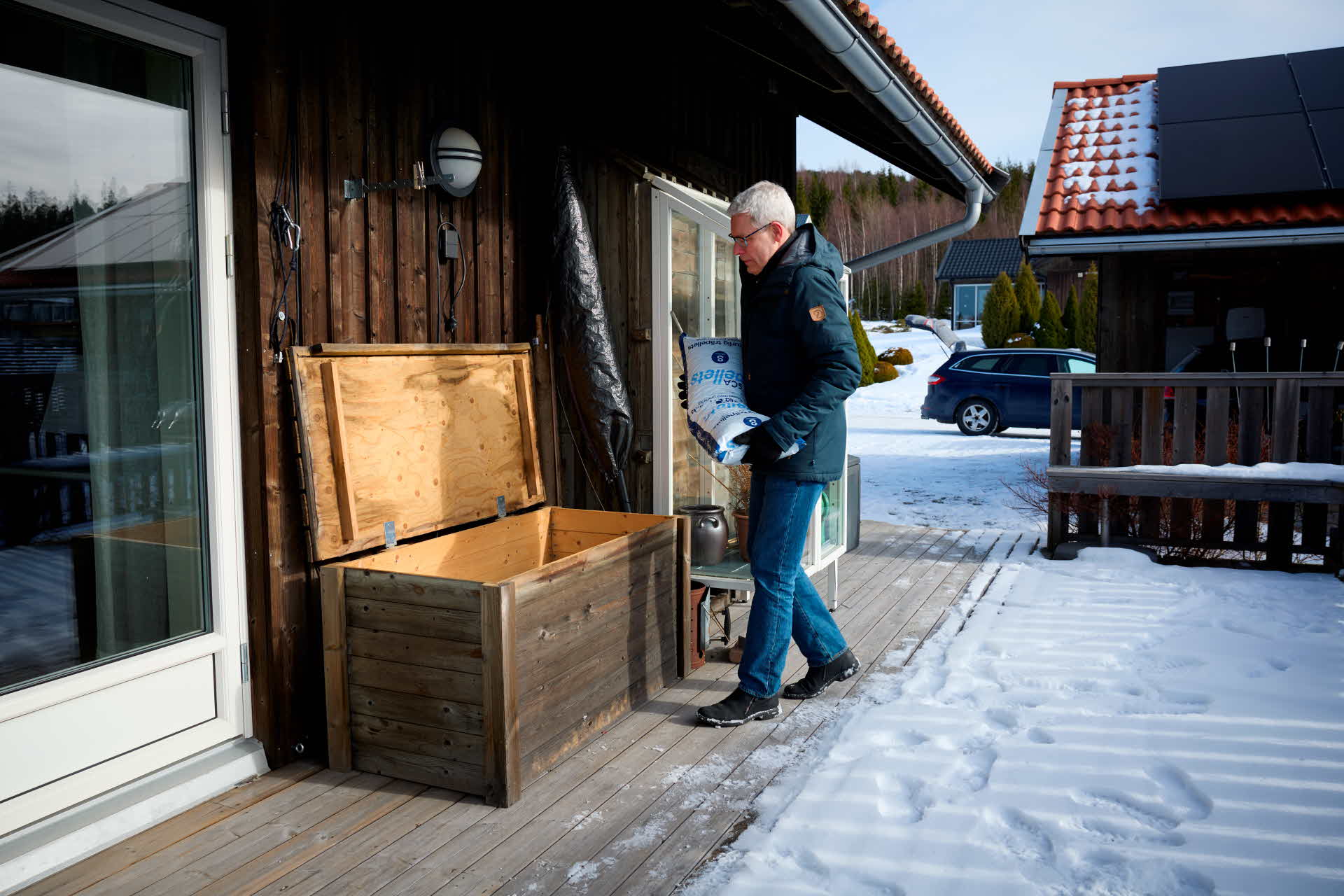
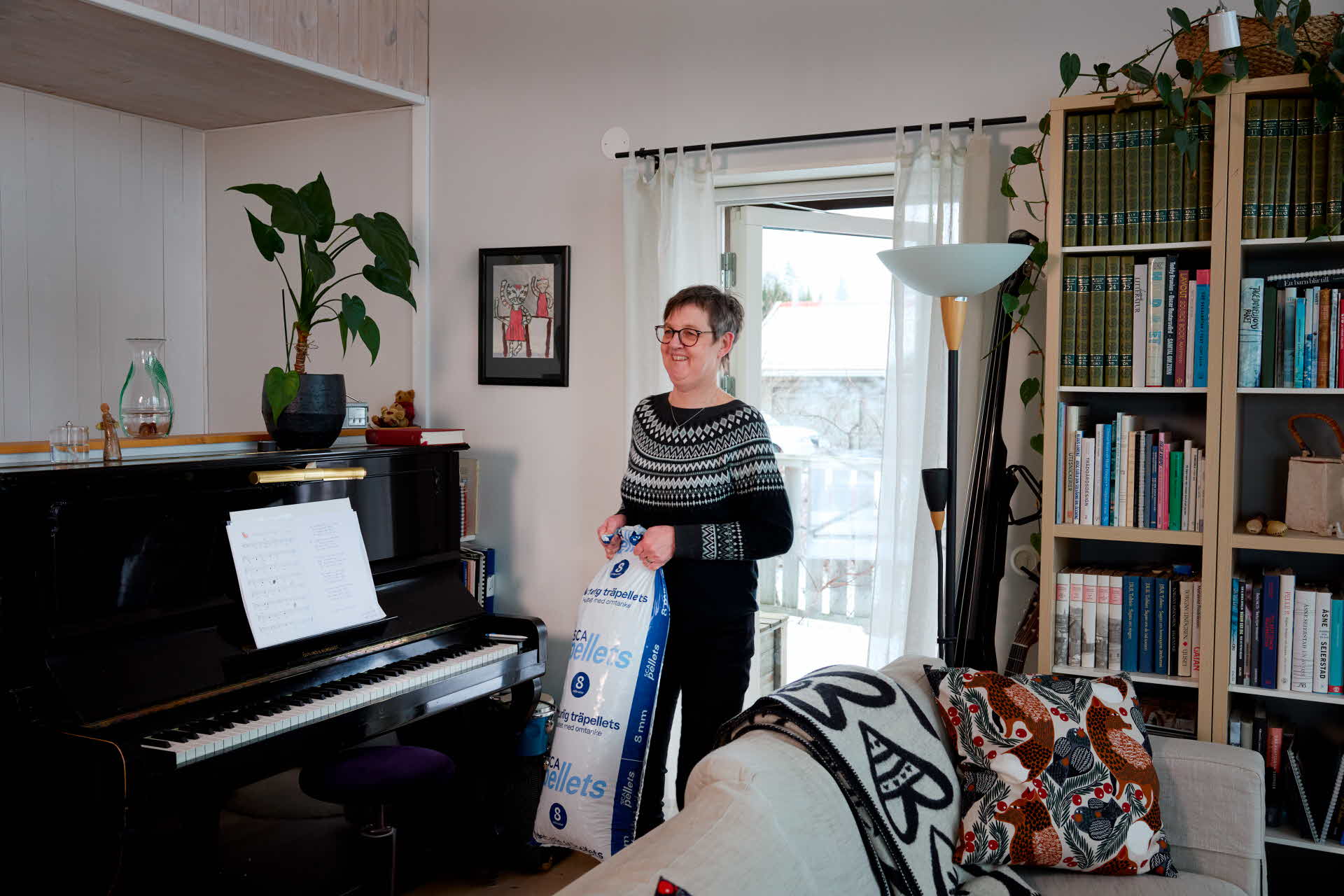
Lena fetches a refill from the pellet box on the patio.
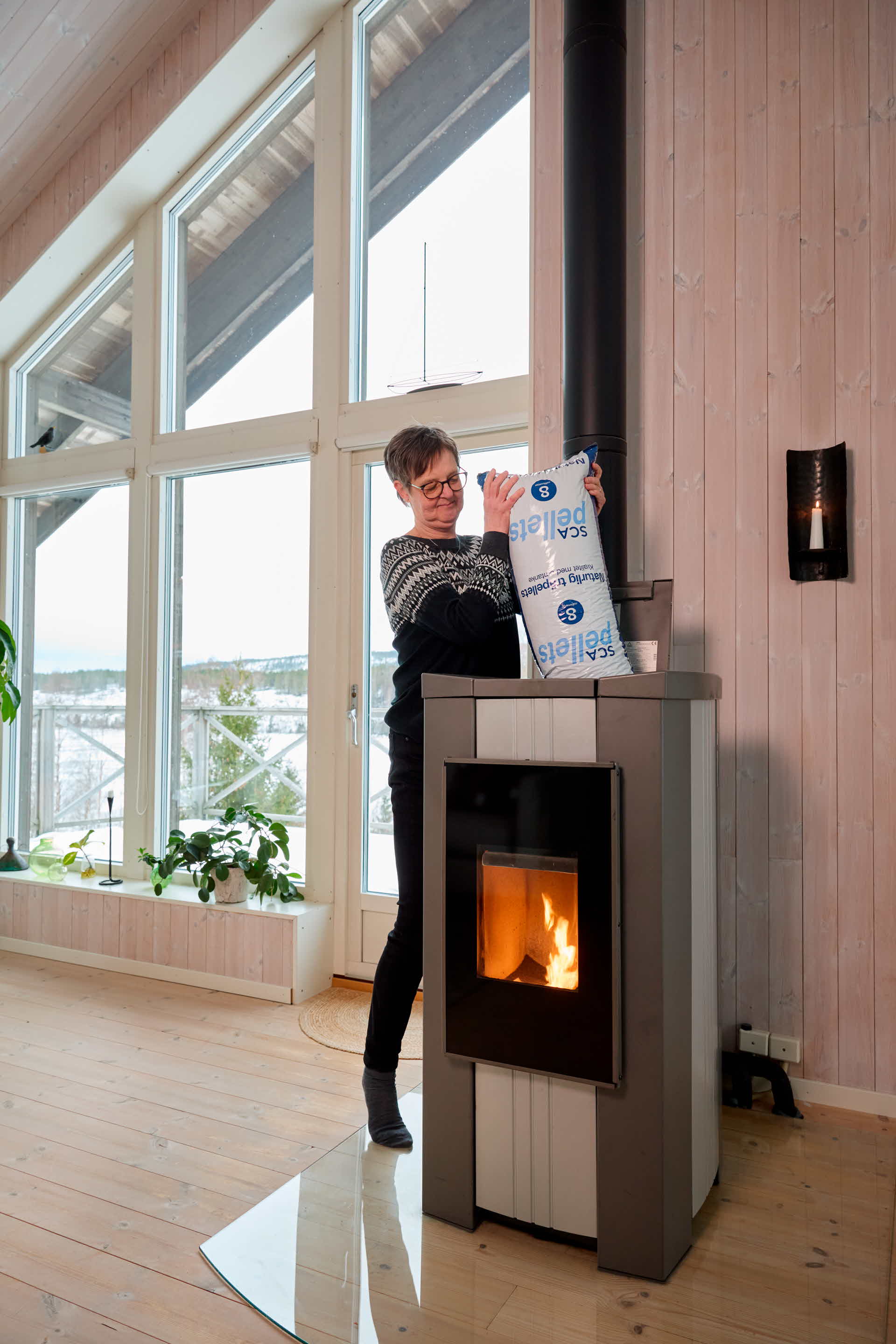
Refueling the heart of the home – the pellet stove.
Prepping
“As a purely prepping measure, we installed a wood-burning stove a few years ago,” says Lena. “Because what happens if the power goes out? Then we’re left without a heat source. That’s something I’ve worried about.”
With a wood stove, they can manage without electricity for a while and still keep warm — and even cook some food.
They’ve also experimented with burning pellets in a pellet basket inside the stove, Nils explains.
“The air intake in our stove was well placed, so once it got going, it worked perfectly. Fire starters or similar are definitely recommended. So now we know we can burn pellets in the stove as well.”
“Good, because pellets are also easier to handle than firewood,” Lena adds.
And they always have pellets at home. Well—almost always.
Power Station
Before they installed the wood stove, they considered investing in a small generator as a backup.
“But a wood stove is much cozier,” says Lena.
An alternative to a generator could be a portable power station. These can be charged via a car’s cigarette lighter socket, a wall outlet, or directly from solar panels. With a portable power station, you can run the stove’s startup and fan for a while, and charge everything from mobile phones to electric kettles and power tools.

With the help of a pellet basket, you can burn pellets in a wood-burning stove. The baskets come in various sizes and designs.
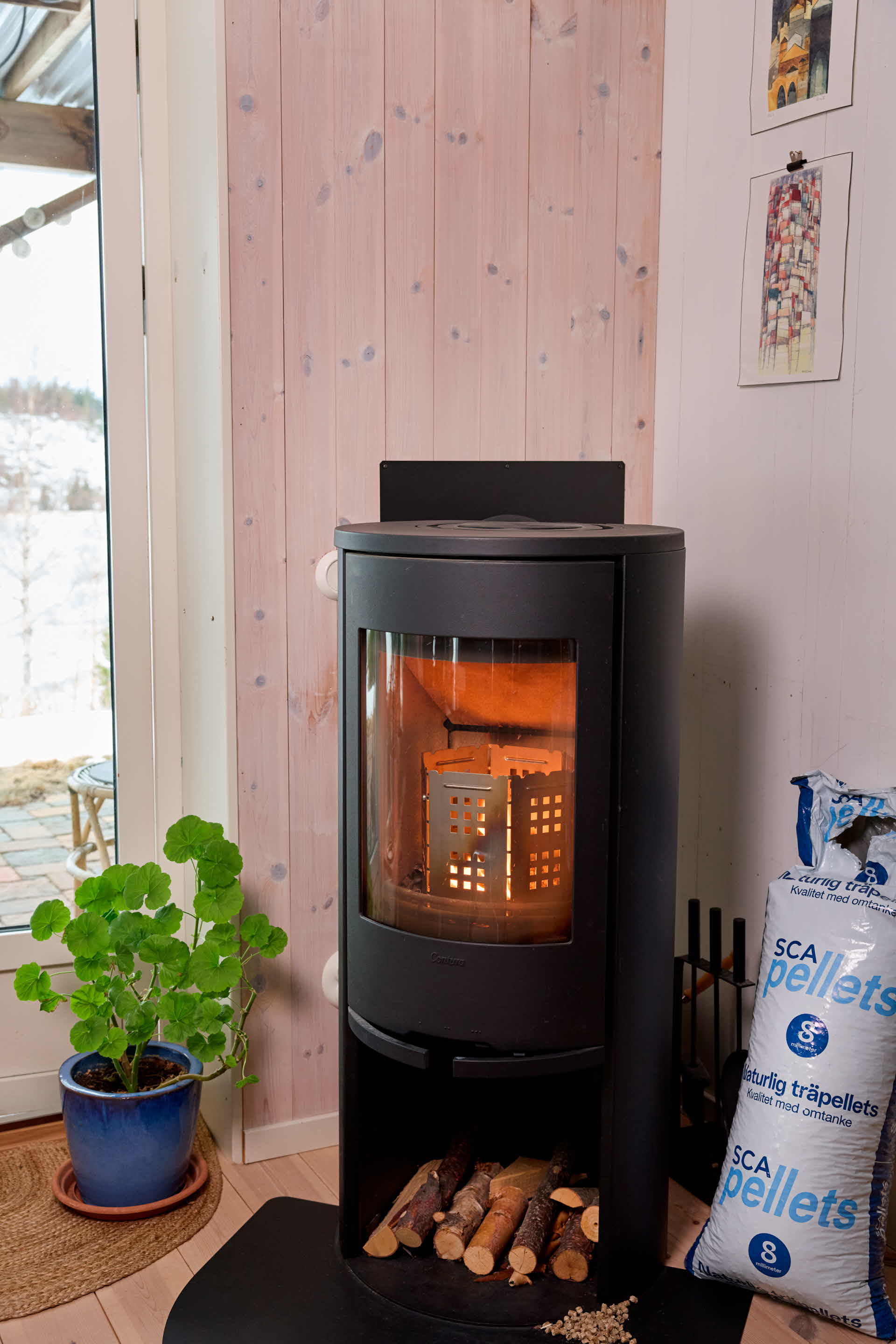
How well the pellet basket works depends, among other things, on the air supply of the wood stove and the design of the pellet basket.
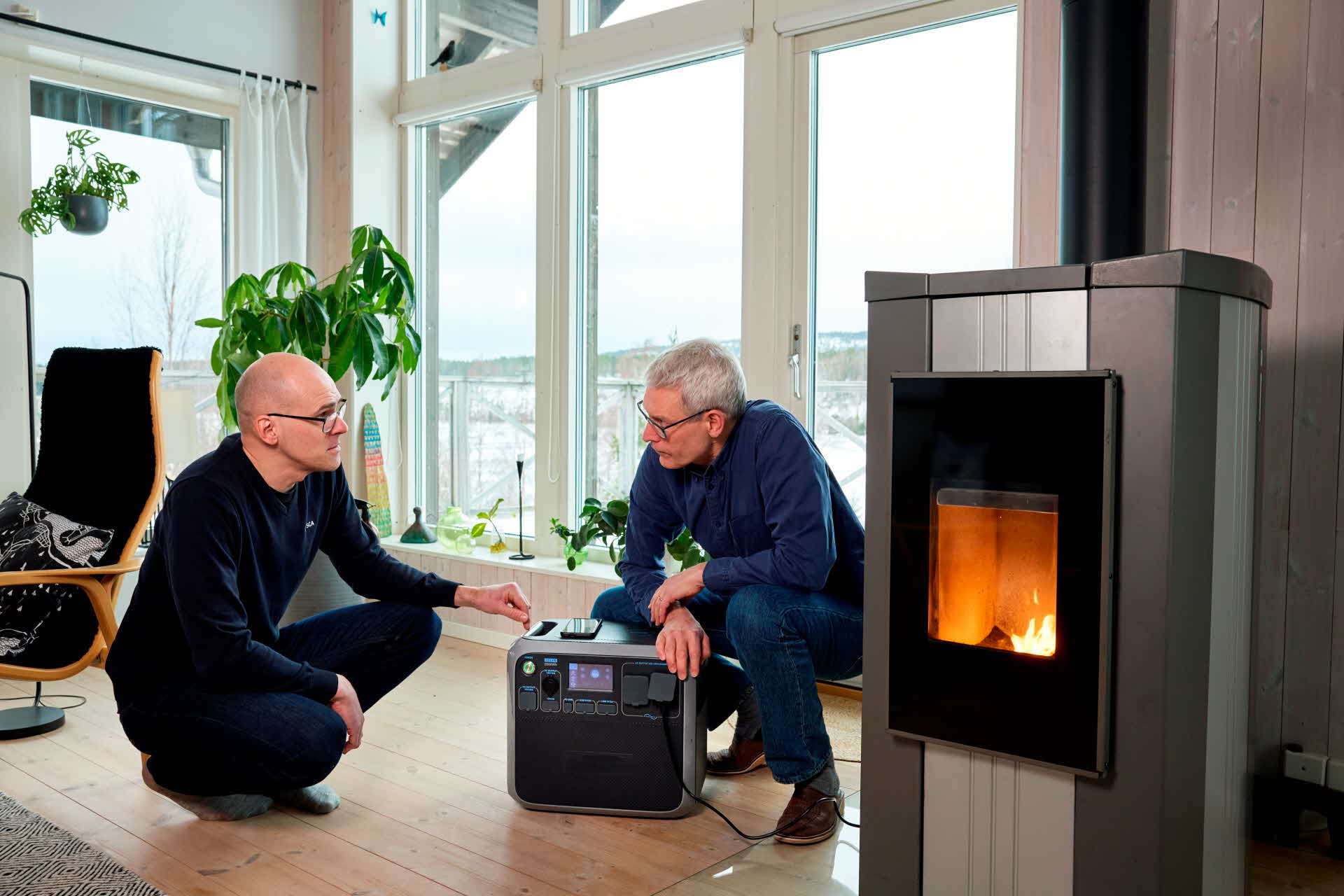
With a power station, you can, for example, run the pellet stove during a power outage.
Burning Interest
It is Nils who has the greatest interest in and commitment to the house's heating system.
"I probably spend more energy on it than I actually need to," he says. "But I think it's fun to work on optimization and efficiency to make the system as effective and economical as possible."
Lena, on the other hand, thinks it's a bit too much to keep track of.
"If I lived alone in the house, I would make sure to have a service agreement with the company that installed the heating system, so I could call for help if needed," she says.
If They Built New Today
With nearly 15 years of experience living in a house with a combination of heat sources, Lena and Nils are satisfied with the choices they made when they built the house.
"It's a security to have several different heat sources," they say. "And it feels good that we have chosen a heating system that is sustainable in the long term."
Possibly, if they were building new today, they would choose mechanical ventilation instead of the air heat pump. Maybe more solar panels instead of solar collectors.
"The combination of pellets and solar is something we would definitely choose again."
When asked if they have more energy plans, Nils replies: "Of course, it would be nice to switch the biogas car for an electric car - and charge it with self-produced electricity..."
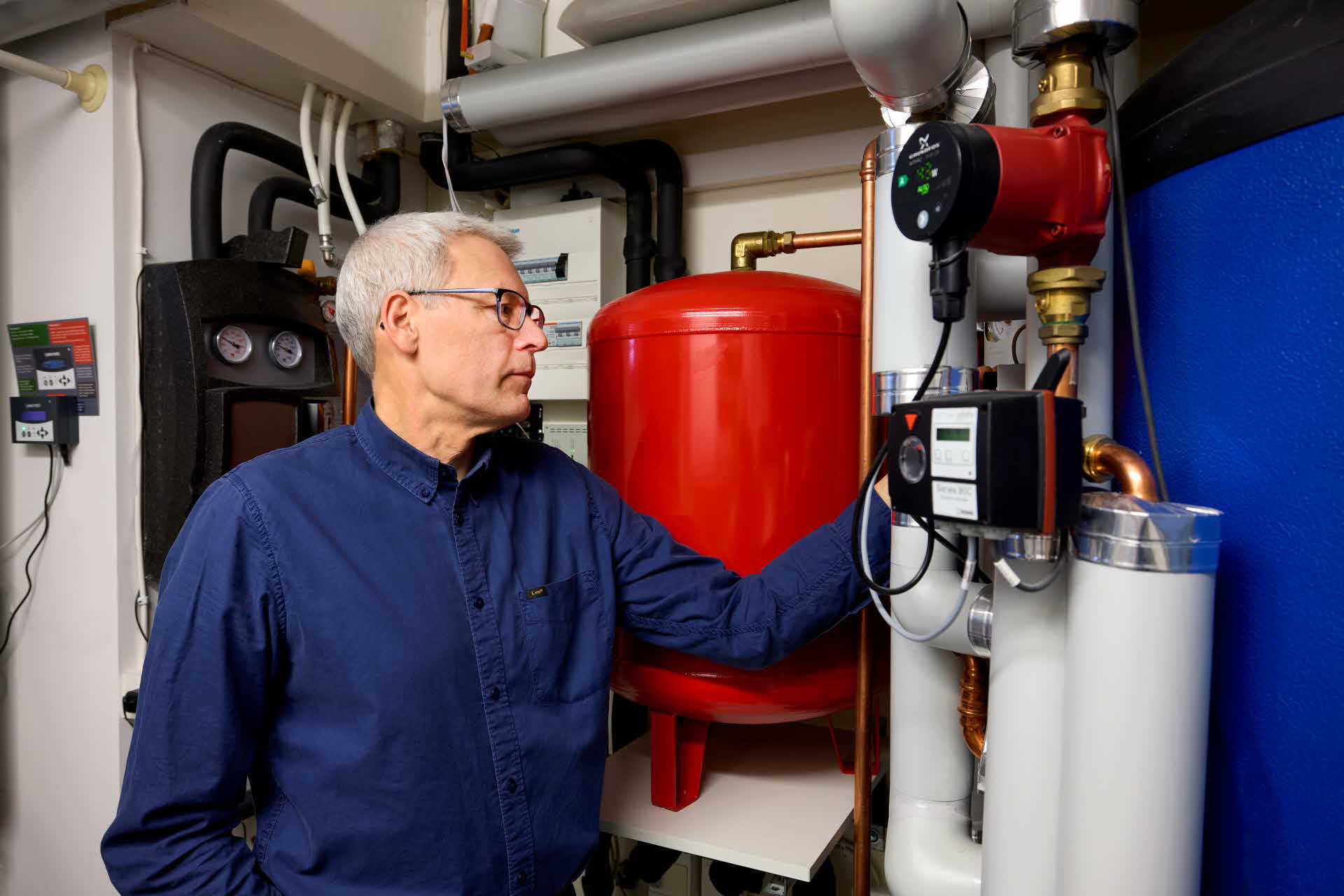
The equipment is well-organized and takes up much less space than you might think.
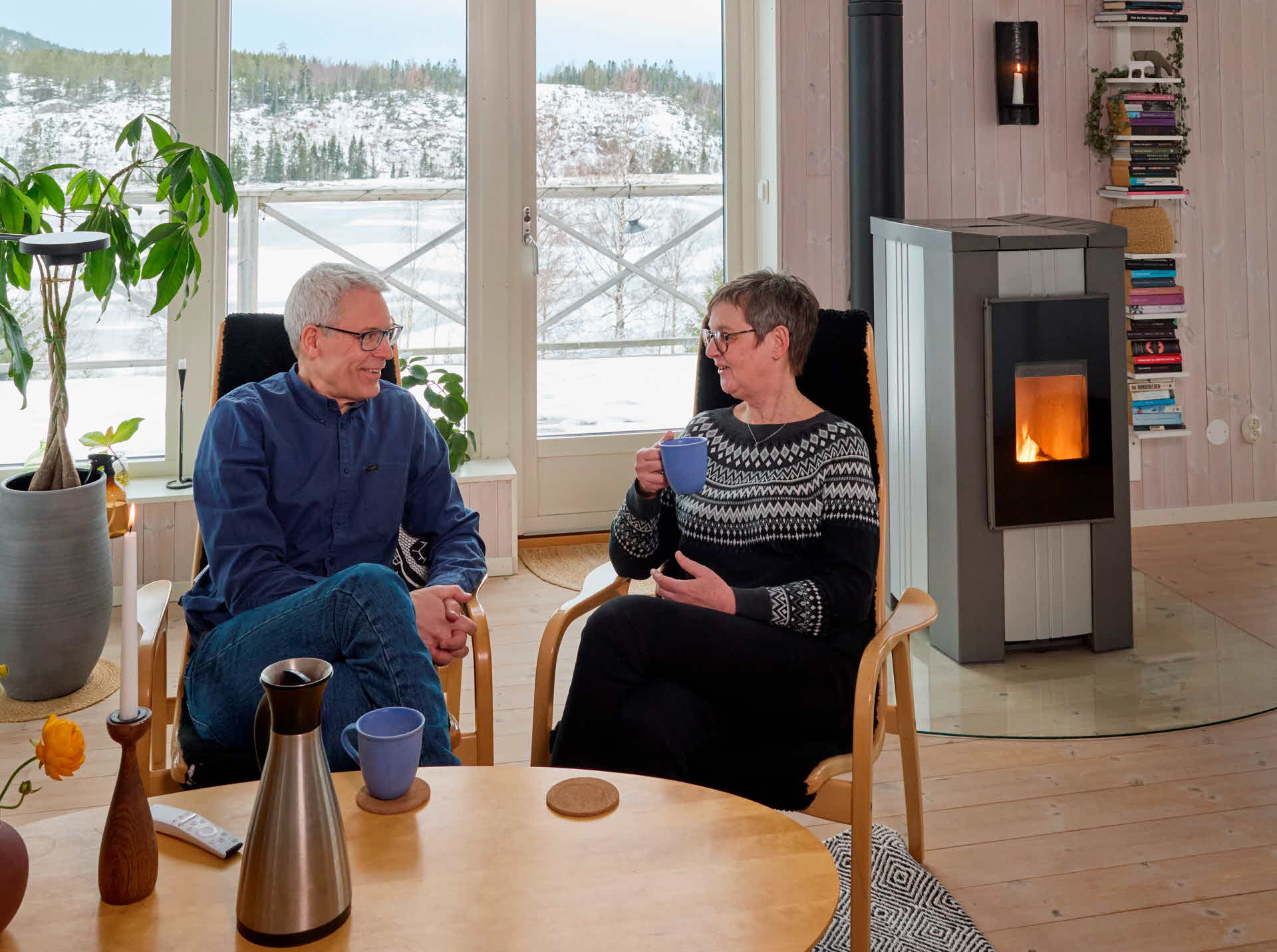
We have probably been calmer than many others now that energy prices have risen. We consume little electricity and have several heating options.
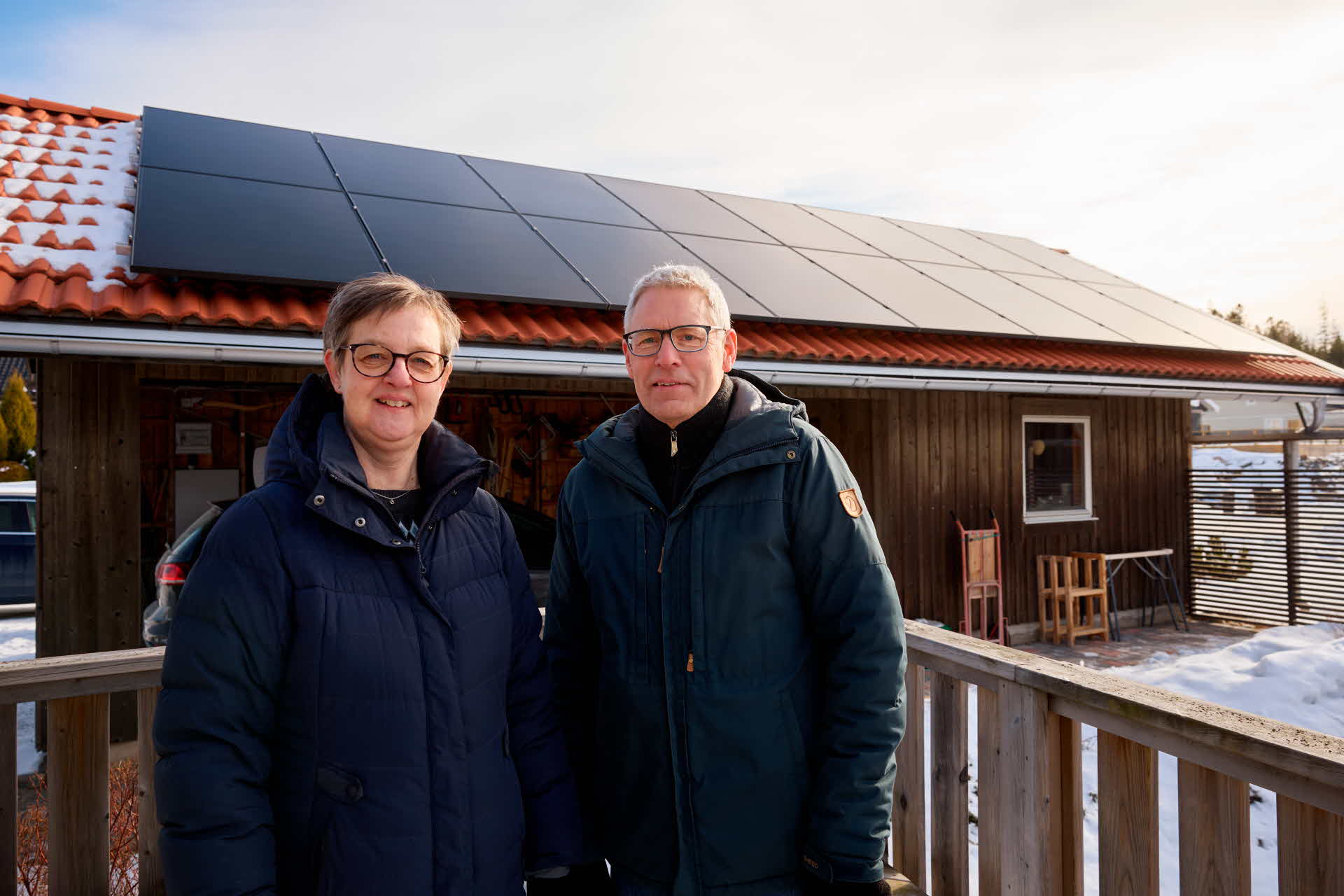
If Lena and Nils were building new today, they would choose the combination of pellets and solar again.
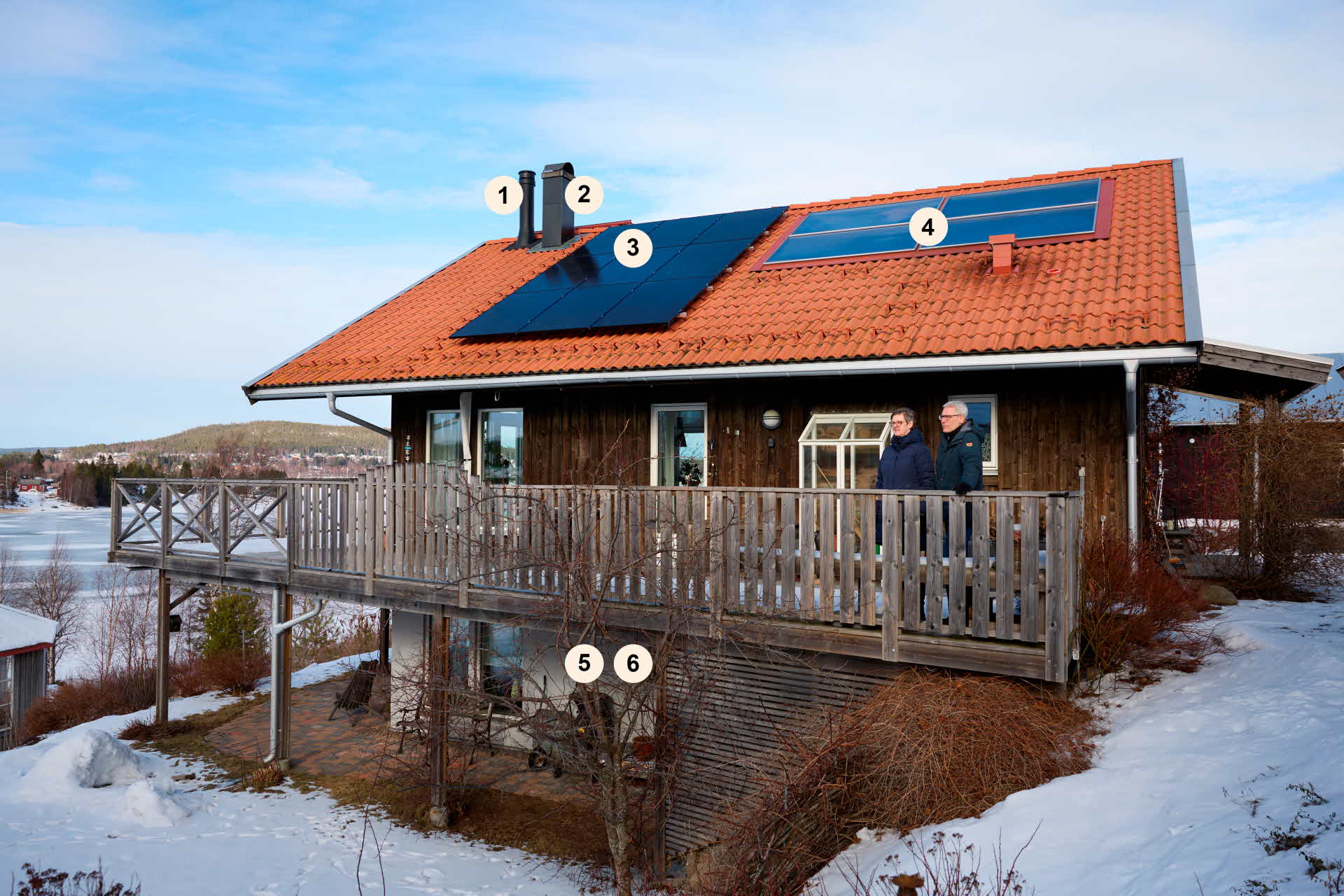
Nils och Lena's heating system
- Wood stove
- Pellets stove
- Solar panels (also on the garage roof)
- Solar collectors
- Air heat pump
- Electric heater
